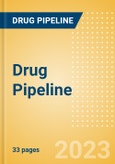The report also analyzes the clinical and commercial landscapes of NSCLC, with pricing assumptions based on currently marketed products by class of cell & gene therapies, accompanied by a transparent forecast methodology.
Additionally, the report evaluates indication-specific unmet needs and competitive assessment, and identifies key future players in the cell therapy market.
- Cell & gene therapies (CGTs) constitute a very small proportion of the overall NSCLC pipeline and will face a high level of competition. Cell therapies, consisting mostly of tumor-infiltrating lymphocytes (TILs) and CAR-T cells, are the most-abundant modality type in the NSCLC CGT pipeline but fall far behind traditional therapies such as monoclonal antibodies and small molecules.
- Tumor-infiltrating lymphocytes and gene therapies are the most promising CGT classes for treating NSCLC. TILs are among the few CGT technologies that have demonstrated clinical activity in NSCLC, including even complete responses (CR).
- The publisher's patient-based forecast projects the NSCLC cell therapy market across the 8MM to reach $2.8 billion in 2031, while across the 15M, the overall NSCLC market sales are projected to reach peak sales of $45.4 billion. Using a drug-level forecast approach, cell therapies are expected to reach $1.2 billion in peak sales in eight major pharmaceutical markets (8MM) (US, France, Germany, Italy, Spain, UK, Japan, and China), followed by gene therapies with $920 million.
- A low level of unmet need for CGT agents exists in most NSCLC patient populations, with exceptions that can prove very lucrative. NSCLC presents with niche unmet needs across specific patient populations, which makes an indication-wide impact by CGT therapies unlikely. However, CGT does have an increased potential to address some of the current unmet needs in the settings of resistance to immunotherapy, as well as personalized approaches to tackle resistance to any therapies.
Key Highlights
Report deliverables include a PowerPoint report and Excel-based forecast modelForecast includes 8 countries
Forecast covers 2021-2031
Seven markets are extrapolated, obtaining a 15-market value for all NSCLC therapeutics
Scope
This report includes disease epidemiology, a 10-year patient-based forecast for marketed and pipeline therapies with established mechanisms of action and cell & gene therapies by class, including early- to late clinical stage pipeline products with launch date assessment by 8MM market.Reasons to Buy
- OBTAIN CELL & GENE THERAPY SALES FORECASTS ACROSS MULTIPLE REGIONS
- GAIN INSIGHT INTO PROMISING EARLY STAGE APPROACHES
- Our indication specific forecast models answer questions such as:
- What is the target patient pool for cell & gene therapies in each cancer indication?
- Which patient groups are more likely to receive these therapies?
- What does the cell & gene therapy clinical stage pipeline look like in each cancer indication
- What is the anticipated breakdown between autologous and allogeneic cell therapies?
- When will cell & gene therapies launch in each market?
- What is the total market value projected for the forecast end, in 2031?
Table of Contents
Companies Mentioned (Partial List)
A selection of companies mentioned in this report includes, but is not limited to:
- Iovance
- Candel Therapeutics
- Replimune








